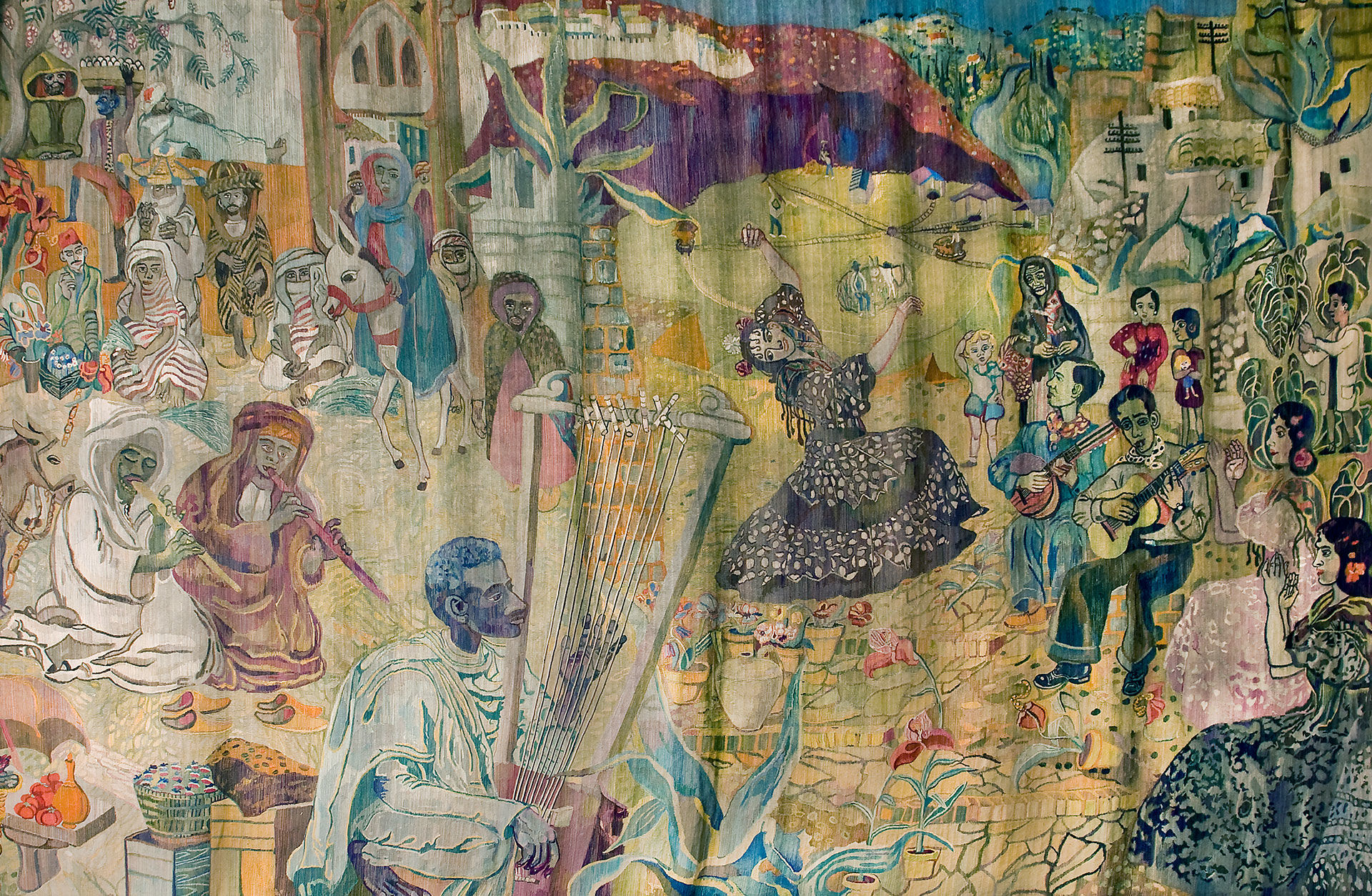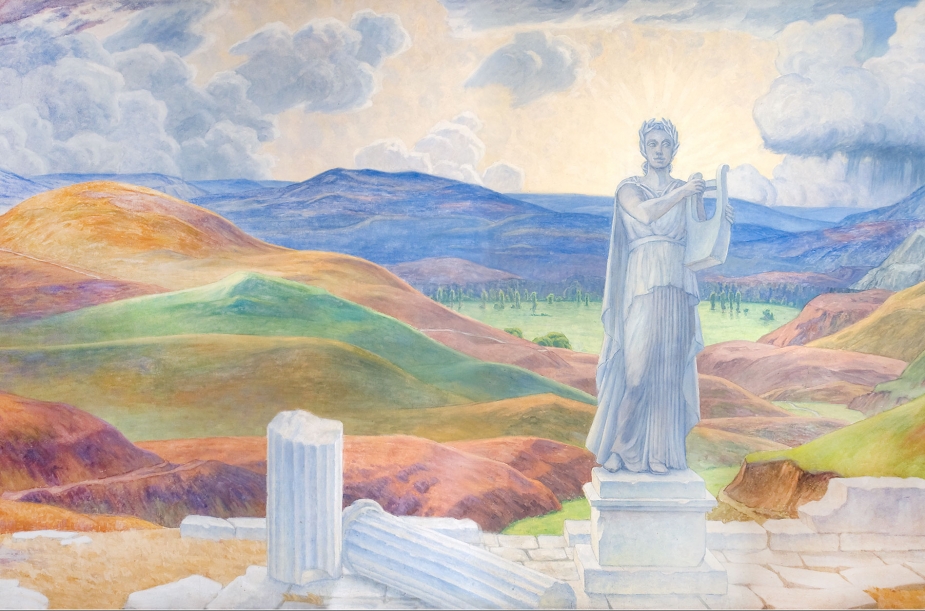The motif is a fantasy landscape where the artist took his inspiration from Österlen and Southern Europe, painted in 1936. When the fresco was made, Prince Eugene was 73 years old and he had the artist Gustaf Magnusson to help him paint the lower parts of the painting, more inconvenient to perform. The fresco can be seen in the foyer outside the Great Hall, to the left when you go up the right marble stairs.
Al Fresco technology has been used since the late Middle Ages and is painted with color pigments dissolved in water on moist lime plaster, which means that the pigments combine with the plaster and make the image very light-hardy and durable.
Prins Eugen (1865-1947)
Prince Eugene went to Paris in 1887 under the pseudonym Monsieur Oscarsson to “for some time pursue art studies” at Léon Bonnat’s art school. In Sweden, the prince painted landscapes and people with Hugo Salmson as advisor. His motifs were characterized by a kind of symbolically charged nature romance. He drew inspiration from, among others, the Swiss artist Arnold Böcklin. After his death, Prince Eugene bequeathed his entire art collection to the state, which can be seen at the Waldemarsudde Museum, Stockholm, which until 1947 was the prince’s home.
ca 3,1 x 6,7 m

Art with music in focus
Many of the works of art in Gothenburg Concert Hall are connected to music or have a relationship with Gothenburg Symphony Orchestra. Here you will find everything from portraits of composers such as Grieg and Sibelius to Sweden's largest weave with patterns by Sven X-et Erixson.
Experience the concert magic
Gothenburg Concert Hall has enchanted music lovers since 1935! It is one of life’s great pleasures to come here, relax and take in the atmosphere in the beautiful surroundings, before being moved, exalted and overwhelmed by the evening’s music.

